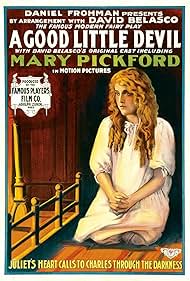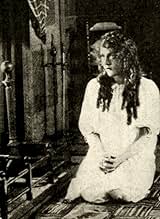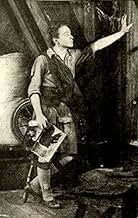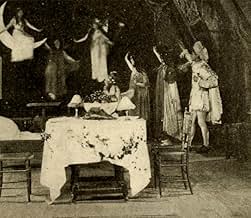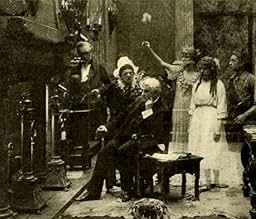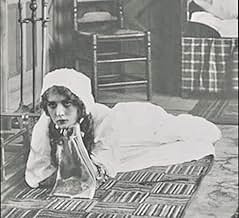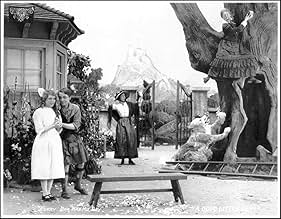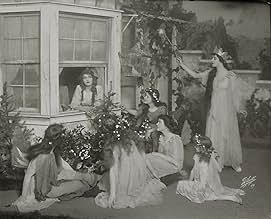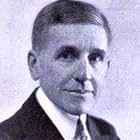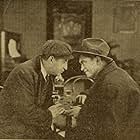Charles MacLance, a mischievous little boy sent to live with his cruel aunt, Mrs. MacMiche, takes his happiness from the make-believe world of fairies which he has created with Juliet, a lit... Read allCharles MacLance, a mischievous little boy sent to live with his cruel aunt, Mrs. MacMiche, takes his happiness from the make-believe world of fairies which he has created with Juliet, a little blind girl. When Charles' aristocratic grandfather dies, however, he is sent away to a... Read allCharles MacLance, a mischievous little boy sent to live with his cruel aunt, Mrs. MacMiche, takes his happiness from the make-believe world of fairies which he has created with Juliet, a little blind girl. When Charles' aristocratic grandfather dies, however, he is sent away to an expensive school, in preparation for his adult life as a lord. As he grows up, he forget... Read all
- Undetermined Role
- (unconfirmed)
- (uncredited)
- Directors
- Writers
- All cast & crew
- Production, box office & more at IMDbPro
Storyline
Did you know
- TriviaBased on the play with the same name, which premiered January 8, 1913 at Belasco's Republic Theatre. Produced by David Belasco, the play also starred Mary Pickford.
- ConnectionsFeatured in The House That Shadows Built (1931)
Recently, the Museum of the Moving Image in Queens, New York, hosted a festival of restored films featuring Mary Pickford. The 12-minute fragment of A Good Little Devil shown at the festival is apparently all that remains of this intriguing milestone of theatrical and cinematic history. When the full version premiered in March of 1914 it began with a prologue featuring David Belasco himself introducing the show, but unfortunately this footage no longer survives. Interestingly, however, the fragment that remains tells a reasonably complete story in itself, as if someone edited the full-length film into a one-reel 'highlights' version. The plot and character relationships are not entirely clear, but the gist of the piece comes across.
The story concerns a young man of Scottish background named Charles MacLance, who is apparently the victim of pride and a swelled head. He no longer deigns to associate with his family, boyhood friends, or the down-home folk from his village, but instead dresses like a titled Englishman, and hangs out with haughty aristocrats. Meanwhile, he is missed by his desperately sick mother -- played by a man in drag! -- and his true love Juliet, a blind girl who cares for the old woman. As Charles sits brooding before the fireplace his "conscience" appears in visible albeit ghostly form, when his younger self, wearing a kilt, rises from his body and confronts his corporeal self. Wracked with guilt, he returns to his village, visits the old lady and has an awkward reunion with Juliet. He is also greeted joyfully by the family dog -- played by a man capering about on all fours in a dog costume. Charles' return to the village seems to unleash magical spirits: winged fairies appear and restore Juliet's sight, then restore the old lady to full health. (In the stage production Lillian Gish played one of the fairies, but she's not in the movie.) When Charles' snobby friends come to take him away he renounces them, in fiery words of amusingly purple prose, and chooses to stay with the simple, honest villagers of his youth.
The abridged version of A Good Little Devil shown at the festival was greeted by the audience with sympathetic chuckles. I could see why Mary Pickford considered it something of an embarrassment, for she'd been making more sophisticated films than this one at Biograph for years. Still, while it is quite primitive, the movie is rather sweet, and Mary had nothing to be ashamed of where her own performance was concerned. The man in the dog outfit was a real crowd-pleaser, though we all wondered why the old lady was played by an obvious transvestite. In any event, even in its truncated form Edwin S. Porter's A Good Little Devil is an intriguing curio for silent film buffs and kind of a hoot, besides.
Details
- Runtime50 minutes
- Color
- Sound mix
- Aspect ratio
- 1.33 : 1
Contribute to this page

